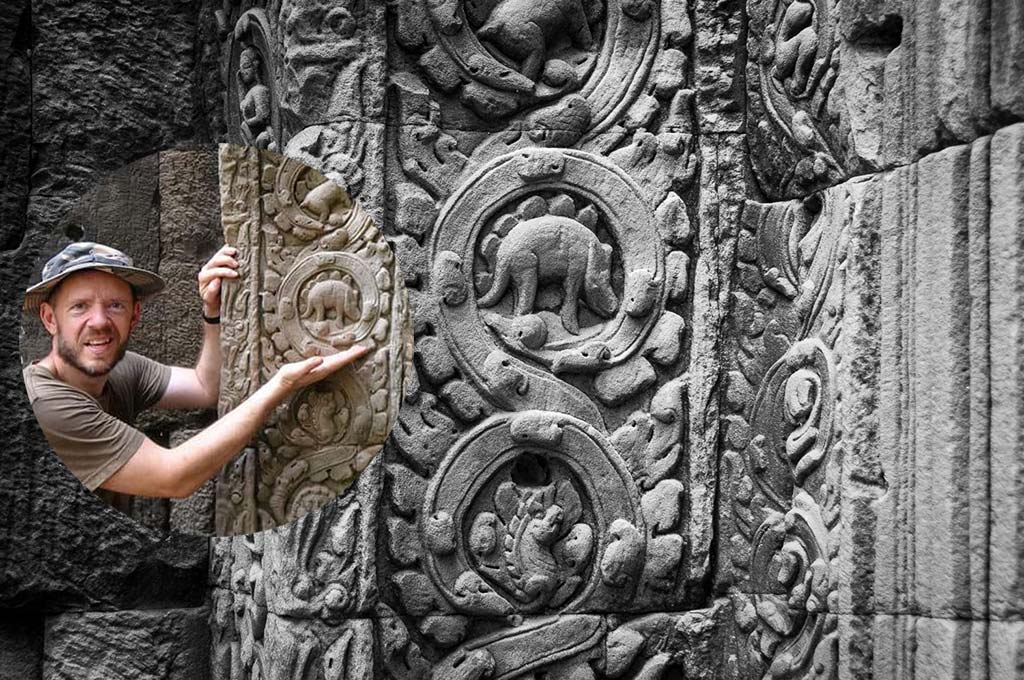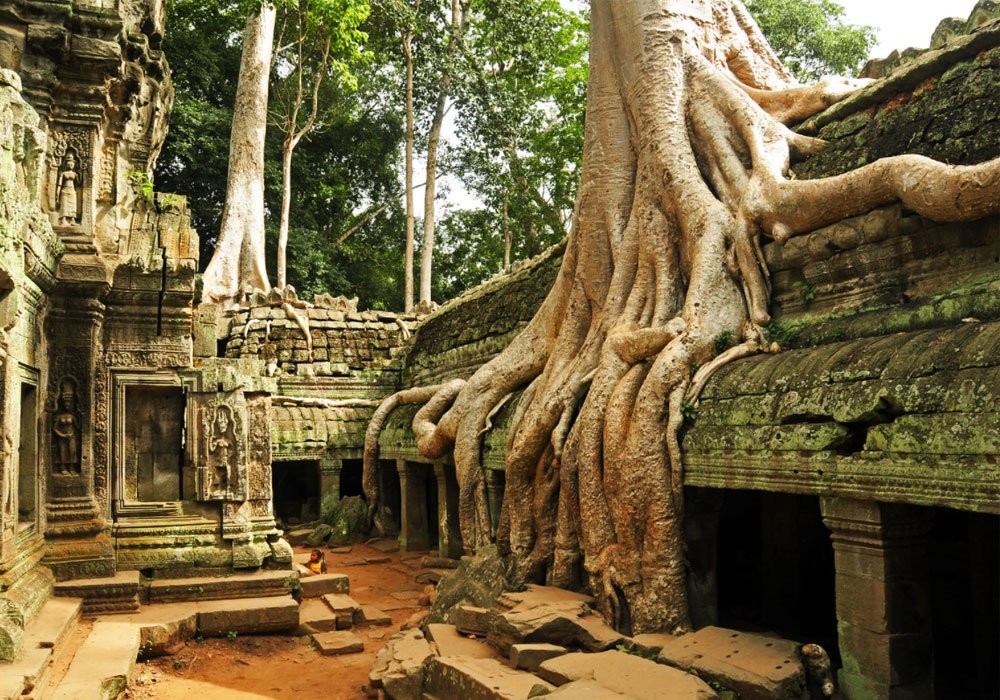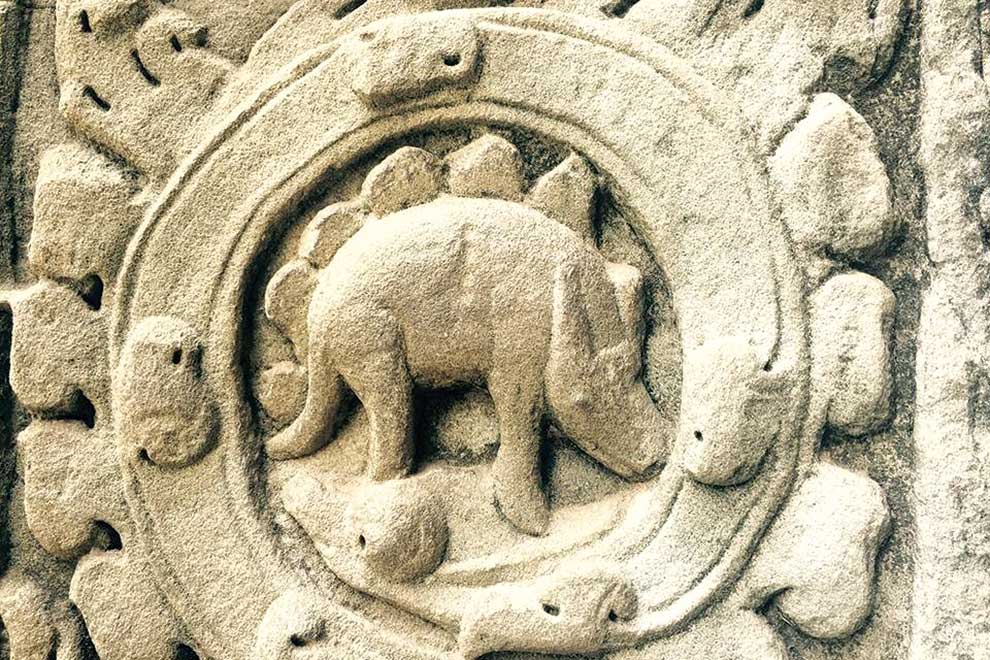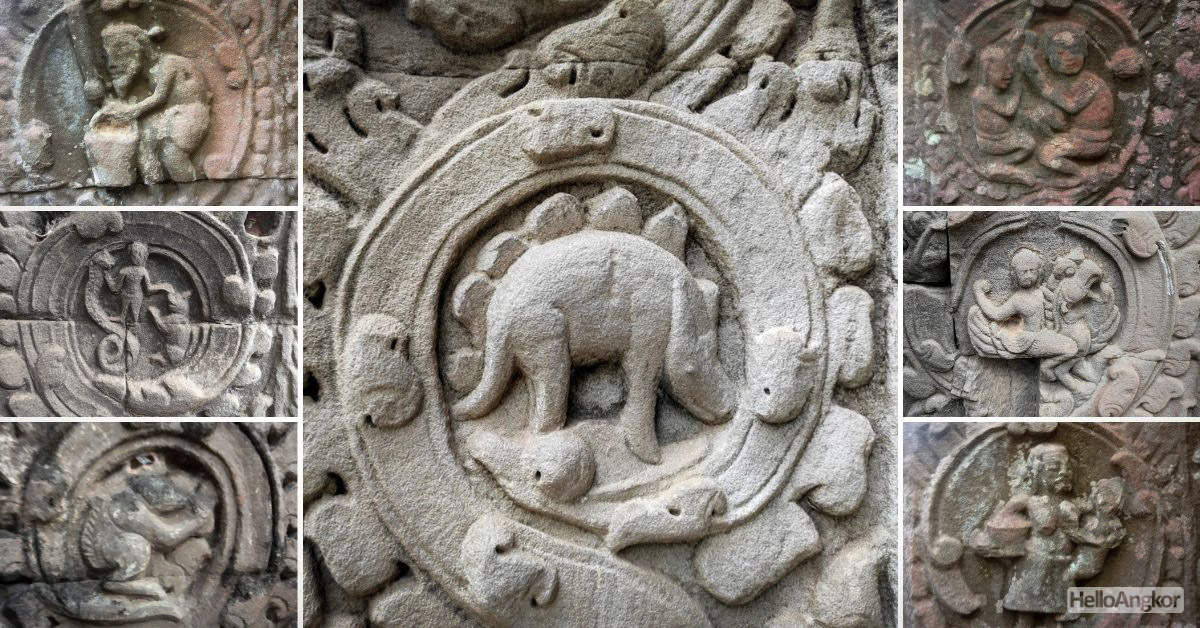The temple-monastery of Ta Prohm, constructed in the late 12th century under the rule of Jayavarman VII, is a site of historical and artistic wonder. Dedicated to the king’s mother, Sri Jayarajacudamani, the temple is adorned with numerous bas-reliefs depicting a diverse array of animals, both real and mythical. Among these is a particularly ambiguous relief that some claim represents a stegosaur, igniting debates and theories about its true nature.
The Controversial Bas-Relief

Discovery and Initial Publicity
The “dinosaur” relief of Ta Prohm first captured public attention in the late 1990s when it was highlighted in Michael Freeman and Claude Jacques’s 1997 guidebook, Angkor Cities and Temples. The authors later reiterated their observations in their 1999 book, Ancient Angkor, describing the relief as a convincing representation of a stegosaur. This claim spurred widespread interest and speculation, especially among those inclined towards fringe theories.

Description and Interpretations
The relief in question depicts an animal with a convex-shaped back, adorned with a series of lobe-like features reminiscent of stegosaurian plates. However, these “plates” are likely stylized background foliage, as similar designs are prevalent in other reliefs throughout the temple. When scrutinized closely, the animal in the relief shows significant anatomical differences from stegosaurs, such as the absence of a thagomizer (tail spikes) and distinct head and body proportions.
Historical Context of Ta Prohm

Construction and Decoration
Ta Prohm was constructed in the late 12th century and features numerous bas-reliefs of various animals and mythical creatures. The exact timing of the carving of the “dinosaur” relief is unknown, and the temple has undergone several phases of damage, expansion, and modification over the centuries. After the fall of the Khmer Empire, Ta Prohm, like many other temples, was largely abandoned and left to the encroaching jungle.
Modern Recognition and Theories
The “dinosaur” relief gained modern recognition after being featured in Freeman and Jacques’s works. However, the relief’s ambiguous nature has led to much speculation. Some have suggested that it might depict a real animal, such as a chameleon, a rhinoceros, or even a boar. Others propose that it may represent a mythical creature, given the presence of other mythical figures in the temple’s artwork.
Theories and Debates

Fringe Theories
The relief has been cited by proponents of fringe theories, including Young Earth creationists and cryptozoologists, as evidence that humans and non-avian dinosaurs once coexisted. This claim has been widely publicized online and even featured in the Creation Evidence Museum of Texas. However, these theories are not supported by mainstream science.
Academic Consensus
There is no academic consensus on the exact animal depicted in the relief. Most scholars agree that the supposed “plates” are likely stylized foliage. The animal’s anatomy does not match that of known stegosaurs, and the relief lacks other key features of stegosaurs, such as a thagomizer. Furthermore, the Khmer Empire was a highly advanced society, and it is unlikely that the presence of stegosaurs would have gone unrecorded except through a single ambiguous relief.
Modern Hoax Theory
Another possibility is that the relief is a modern hoax. Ta Prohm is a popular site for film crews, and it is plausible that the relief was either made or altered in recent times as a joke. The relatively lighter appearance of the relief compared to surrounding carvings could suggest recent modifications, although this could also be due to cleaning or mold-making activities by visitors.
Conclusion
The “dinosaur” of Ta Prohm remains one of the most intriguing and controversial artifacts of the ancient Khmer Empire. While its resemblance to a stegosaur has fueled various fringe theories, there is no credible evidence to support the claim that it depicts a non-avian dinosaur. The more likely explanations include stylized artistic conventions, representation of a real but ambiguous animal, or even a modern alteration. Regardless of its true nature, the relief continues to captivate the imagination of visitors and scholars alike, adding to the enduring mystery and allure of Ta Prohm.
In the end, the “dinosaur” of Ta Prohm serves as a reminder of the complexities of interpreting historical art and the caution required in drawing conclusions about the past. Whether an ancient enigma or a modern joke, it remains a fascinating piece of the rich tapestry of human history.
